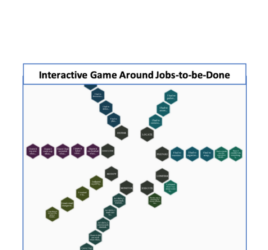
Story-telling, Only Part of Designing for Behavioral Modeling
The core outcome of the Better Choices, Better Health® (BCBH) program is to increase participants’ self-efficacy. Across the entire program we’re deliberate about how we design not only to engage and delight our participants, but also to ensure we increase their self-efficacy.
In 1977[i] Albert Bandura defined self-efficacy as “the belief in one’s capabilities to organize and execute the courses of action required to manage prospective situations.” At Canary Health® we interpret this to mean an individual has the capacity to:
- Assess his/her situation
- Determine what matters to them
- Define particular actions, responses, etc. to that situation
- And (most importantly), have the confidence to achieve those plans.
We leverage several core principles to design for self-efficacy and with this article I want to share with you one of those principles – behavioral modeling. From the training manual for BCBH program facilitators, modeling is presented as follows:
Modeling: People do better when taught by people like themselves. They see self-management is possible, which increases their belief in their own ability to manage.
We design for modeling in several specific ways:
- We use Peers – In an early dissemination of the in-person version of the program at Kaiser, participants taught by health professionals reported learning more about managing their condition, but the groups that were taught by peers “did” more to manage their condition. A core tenet of the program is that trained peers living with a chronic condition, who are given a detailed training manual, can facilitate workshops just as well or better than health professionals. Why is this? People do better when taught by people who are like them. Peer facilitators are modeling what it is like to manage a condition, which can make self-management seem possible. The study concluded: Some of the skills and attitudes necessary to live a healthy life despite chronic medical conditions are best learned from other patients.
- We design tools for our peers that allow for modeling moments: We want our facilitators to provide modeling moments for our participants. For example, facilitators enter their weekly action plans and discussion posts so they will display to participants their own actions as they are creating their own posts. These posts model the facilitators own self-management behaviors and/or problem-solving approaches. The facilitators’ content serves as examples to model for the participants. Our tools also help our facilitators more effectively and efficiently respond to participants when they need a modeling moment. If a participant discussion post goes unanswered, the facilitator will model a supportive post of how they solved a similar issue or point to an example in the group of how someone else approached a similar concern.
- We build modeling moments into the workshops’ content: Activities that promote sharing, problem-solving, and allow participants to help each other find solutions, are another form of modeling. Modeling moments are an important part of sharing experiences. Each week, a weekly discussion question is asked within the BCBH program and can range in topic from barriers, to taking medications, to tips for getting more exercise into a workshop participant’s week, or posting a personal celebration. Participants are always provided examples and/or stories from others as models before they post their weekly discussion posts.
And of course…
- We tell stories: As you all have seen from just this newsletter, there is power in stories to not only engage and entertain, but to help frame. This framing provides an example and a model for readers, watchers, and listeners to further explore their own situation. We’re fond of saying that we are all story-telling animals.
We believe by leading with behavior modeling, we increase our participants self-efficacy which accelerates their behavior change. This in turn leads to better health outcomes and the ability for participants to live the life they want to live.
______________________________________________________________________________________
[i] Bandura, Albert 1977 “Self-Efficacy: Toward a Unifying Theory of Behavioral Change,”Psychological Review 84(2):191-215 · January 1977 https://www.researchgate.net/publication/317953663_Self-Efficacy_Toward_a_Unifying_Theory_of_Behavioral_Change


